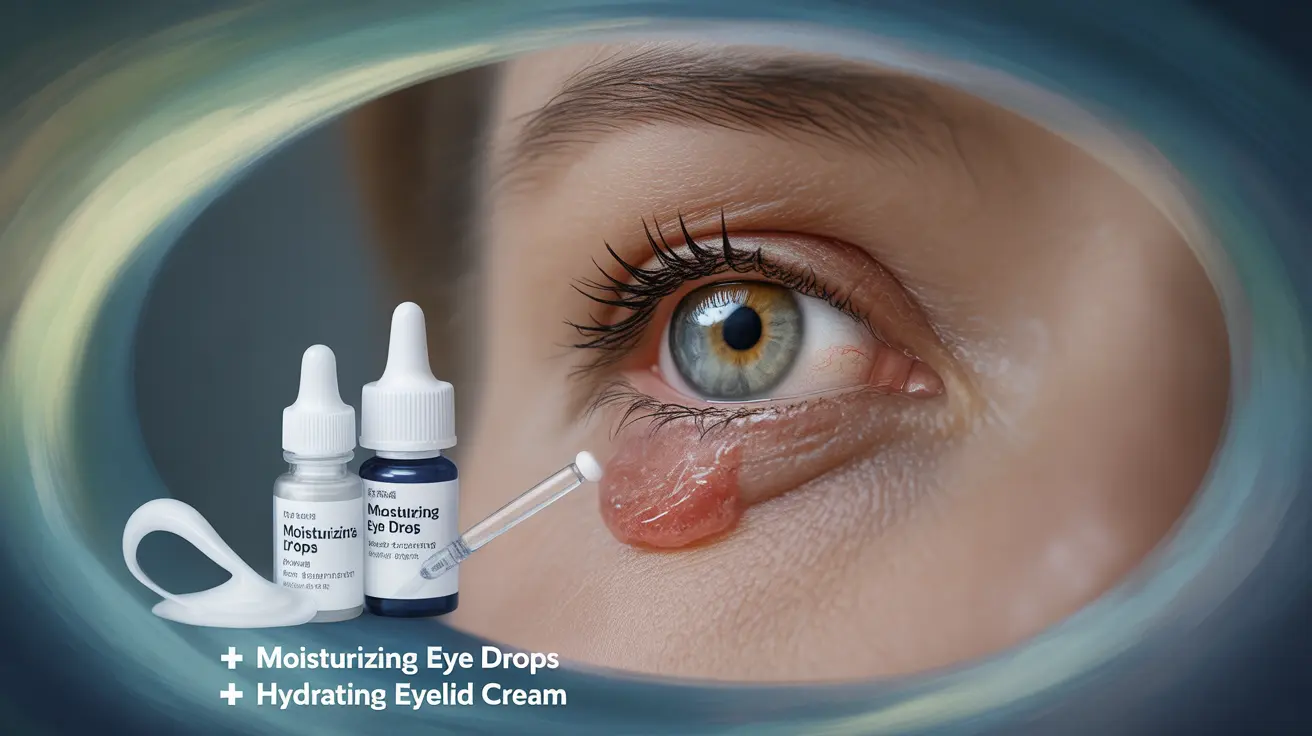Dry eyelids can be an uncomfortable and sometimes painful condition that affects many people. This sensitive area of skin requires special attention and care, as the delicate nature of the eyelid makes it particularly susceptible to dryness, irritation, and inflammation.
Understanding the causes, symptoms, and treatment options for dry eyelids is essential for maintaining healthy eye area skin and preventing complications. This comprehensive guide will help you identify, manage, and effectively treat this common condition.
Understanding the Symptoms of Dry Eyelids
Dry eyelids often present with several distinct symptoms that can help you identify the condition:
- Flaking or scaling of the skin
- Redness and inflammation
- Itching or burning sensation
- Rough or textured skin surface
- Tightness or discomfort when blinking
- Increased sensitivity to products
Common Causes and Risk Factors
Several factors can contribute to the development of dry eyelids:
Environmental Factors
Environmental conditions play a significant role in eyelid health:
- Low humidity levels
- Excessive sun exposure
- Cold or windy weather
- Air conditioning or heating
- High altitude environments
Medical Conditions
Certain underlying health conditions may cause or worsen dry eyelids:
- Eczema or atopic dermatitis
- Contact dermatitis
- Seborrheic dermatitis
- Psoriasis
- Blepharitis
Lifestyle and Product Use
Daily habits and product choices can impact eyelid health:
- Harsh makeup removers
- Certain eye cosmetics
- Frequent eye rubbing
- Poor makeup removal habits
- Inadequate moisturizing routine
Effective Treatment Strategies
Home Remedies and Self-Care
Several at-home treatments can help manage dry eyelids:
- Gentle cleansing with mild products
- Regular moisturizing with appropriate eye creams
- Using a humidifier in living spaces
- Protecting eyes from harsh weather
- Staying well-hydrated
Medical Treatments
When self-care isn't enough, medical interventions may include:
- Prescription moisturizers
- Topical anti-inflammatory medications
- Specialized ointments
- Treatment for underlying conditions
Prevention Tips
Preventing dry eyelids is often easier than treating them. Consider these preventive measures:
- Use gentle, fragrance-free products
- Remove makeup thoroughly but gently
- Protect eyes from extreme weather
- Maintain good eye hygiene
- Stay hydrated and maintain a healthy diet
- Use protective eyewear when needed
When to Seek Medical Help
Consult a healthcare provider if you experience:
- Severe or persistent symptoms
- Signs of infection
- No improvement with home treatment
- Spreading redness or inflammation
- Vision changes or eye pain
Frequently Asked Questions
What are the common symptoms of dry eyelids and how can I recognize them? Dry eyelids typically present with flaking, redness, itching, and a feeling of tightness. You may also notice rough texture, inflammation, and increased sensitivity to products.
What causes dry eyelids and which factors make it worse? Dry eyelids can be caused by environmental factors (low humidity, extreme temperatures), medical conditions (eczema, dermatitis), and lifestyle factors (harsh products, poor skincare routine). These conditions can be worsened by exposure to irritants, weather changes, and certain skincare products.
How can I treat dry eyelids at home and what lifestyle changes help prevent them? Home treatment includes using gentle moisturizers, maintaining good eye hygiene, using a humidifier, and staying hydrated. Lifestyle changes like using gentle products, protecting eyes from harsh weather, and proper makeup removal can help prevent dry eyelids.
When should I see a doctor about dry eyelids and what medical treatments are available? Seek medical attention if symptoms are severe, persistent, or accompanied by signs of infection. Medical treatments may include prescription moisturizers, anti-inflammatory medications, or treatment for underlying conditions.
Can certain makeup, skincare products, or environmental conditions trigger or worsen dry eyelids? Yes, harsh makeup products, certain skincare ingredients, and environmental conditions like low humidity, extreme temperatures, and wind can trigger or worsen dry eyelids. Using gentle, fragrance-free products and protecting your eyes from harsh conditions can help prevent issues.




